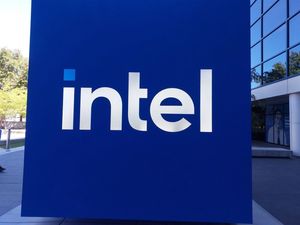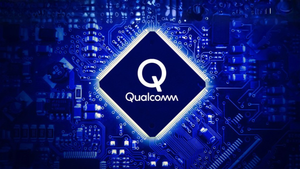
October 28, 2025 – The global semiconductor industry has navigated a period of remarkable contrasts from late 2024 through mid-2025, painting a picture of both explosive growth and challenging headwinds. While the insatiable demand for Artificial Intelligence (AI) chips has propelled market leaders to unprecedented heights, companies heavily reliant on traditional markets like mobile and personal computing have grappled with more subdued demand and intensified competition. This bifurcated performance underscores AI's transformative, yet disruptive, power, reshaping the landscape for industry giants and influencing the overall health of the tech ecosystem.
The immediate significance of these financial reports is clear: AI is the undisputed kingmaker. Companies at the forefront of AI chip development have seen their revenues and market valuations soar, driven by massive investments in data centers and generative AI infrastructure. Conversely, firms with significant exposure to mature consumer electronics segments, such as smartphones, have faced a tougher road, experiencing revenue fluctuations and cautious investor sentiment. This divergence highlights a pivotal moment for the semiconductor industry, where strategic positioning in the AI race is increasingly dictating financial success and market leadership.
The AI Divide: A Deep Dive into Semiconductor Financials
The financial reports from late 2024 to mid-2025 reveal a stark contrast in performance across the semiconductor sector, largely dictated by exposure to the booming AI market.
Skyworks Solutions (NASDAQ: SWKS), a key player in mobile connectivity, experienced a challenging yet resilient period. For Q4 Fiscal 2024 (ended September 27, 2024), the company reported revenue of $1.025 billion with non-GAAP diluted EPS of $1.55. Q1 Fiscal 2025 (ended December 27, 2024) saw revenue climb to $1.068 billion, exceeding guidance, with non-GAAP diluted EPS of $1.60, driven by new mobile product launches. However, Q2 Fiscal 2025 (ended March 28, 2025) presented a dip, with revenue at $953 million and non-GAAP diluted EPS of $1.24. Despite beating EPS estimates, the stock saw a 4.31% dip post-announcement, reflecting investor concerns over its mobile business's sequential decline and broader market weaknesses. Over the six months leading to its Q2 2025 report, Skyworks' stock declined by 26%, underperforming major indices, a trend attributed to customer concentration risk and rising competition in its core mobile segment. Preliminary results for Q4 Fiscal 2025 indicated revenue of $1.10 billion and a non-GAAP diluted EPS of $1.76, alongside a significant announcement of a definitive agreement to merge with Qorvo, signaling strategic consolidation to navigate market pressures.
In stark contrast, NVIDIA (NASDAQ: NVDA) continued its meteoric rise, cementing its position as the preeminent AI chip provider. Q4 Fiscal 2025 (ended January 26, 2025) saw NVIDIA report a record $39.3 billion in revenue, a staggering 78% year-over-year increase, with Data Center revenue alone surging 93% to $35.6 billion due to overwhelming AI demand. Q1 Fiscal 2025 (ended April 2025) saw share prices jump over 20% post-earnings, further solidifying confidence in its AI leadership. Even in Q2 Fiscal 2025 (ended July 2025), despite revenue topping expectations, the stock slid 5-10% in after-hours trading, an indication of investor expectations running incredibly high, demanding continuous exponential growth. NVIDIA's performance is driven by its CUDA platform and powerful GPUs, which remain unmatched in AI training and inference, differentiating it from competitors whose offerings often lack the full ecosystem support. Initial reactions from the AI community have been overwhelmingly positive, with many experts predicting NVIDIA could be the first $4 trillion company, underscoring its pivotal role in the AI revolution.
Intel (NASDAQ: INTC), while making strides in its foundry business, faced a more challenging path. Q4 2024 revenue was $14.3 billion, a 7% year-over-year decline, with a net loss of $126 million. Q1 2025 revenue was $12.7 billion, and Q2 2025 revenue reached $12.86 billion, with its foundry business growing 3%. However, Q2 saw an adjusted net loss of $441 million. Intel's stock declined approximately 60% over the year leading up to Q4 2024, as it struggles to regain market share in the data center and effectively compete in the high-growth AI chip market against rivals like NVIDIA and AMD (NASDAQ: AMD). The company's strategy of investing heavily in foundry services and new AI architectures is a long-term play, but its immediate financial performance reflects the difficulty of pivoting in a rapidly evolving market.
Taiwan Semiconductor Manufacturing Company (NYSE: TSM), or TSMC, the world's largest contract chipmaker, thrived on the AI boom. Q4 2024 saw net income surge 57% and revenue up nearly 39% year-over-year, primarily from advanced 3-nanometer chips for AI. Q1 2025 preliminary reports showed an impressive 42% year-on-year revenue growth, and Q2 2025 saw a 60.7% year-over-year surge in net profit and a 38.6% increase in revenue to NT$933.79 billion. This growth was overwhelmingly driven by AI and High-Performance Computing (HPC) technologies, with advanced technologies accounting for 74% of wafer revenue. TSMC's role as the primary manufacturer for most advanced AI chips positions it as a critical enabler of the AI revolution, benefiting from the collective success of its fabless customers.
Other significant players also presented varied results. Qualcomm (NASDAQ: QCOM), primarily known for mobile processors, beat expectations in Q1 Fiscal 2025 (ended December 2024) with $11.7 billion revenue (up 18%) and EPS of $2.87. Q3 Fiscal 2025 (ended June 2025) saw EPS of $2.77 and revenue of $10.37 billion, up 10.4% year-over-year. While its mobile segment faces challenges, Qualcomm's diversification into automotive and IoT, alongside its efforts in on-device AI, provides growth avenues. Broadcom (NASDAQ: AVGO) also demonstrated mixed results, with Q4 Fiscal 2024 (ended October 2024) showing adjusted EPS beating estimates but revenue missing. However, its AI revenue grew significantly, with Q1 Fiscal 2025 seeing 77% year-over-year AI revenue growth to $4.1 billion, and Q3 Fiscal 2025 AI semiconductor revenue surging 63% year-over-year to $5.2 billion. This highlights the importance of strategic acquisitions and strong positioning in custom AI chips. AMD (NASDAQ: AMD), a fierce competitor to Intel and increasingly to NVIDIA in certain AI segments, reported strong Q4 2024 earnings with revenue increasing 24% year-over-year to $7.66 billion, largely from its Data Center segment. Q2 2025 saw record revenue of $7.7 billion, up 32% year-over-year, driven by server and PC processor sales and robust demand across computing and AI. However, U.S. government export controls on its MI308 data center GPU products led to an approximately $800 million charge, underscoring geopolitical risks. AMD's aggressive push with its MI300 series of AI accelerators is seen as a credible challenge to NVIDIA, though it still has significant ground to cover.
Competitive Implications and Strategic Advantages
The financial outcomes of late 2024 and mid-2025 have profound implications for AI companies, tech giants, and startups, fundamentally altering competitive dynamics and market positioning. Companies like NVIDIA and TSMC stand to benefit immensely, leveraging their dominant positions in AI chip design and manufacturing, respectively. NVIDIA's CUDA ecosystem and its continuous innovation in GPU architecture provide a formidable moat, making it indispensable for AI development. TSMC, as the foundry of choice for virtually all advanced AI chips, benefits from the collective success of its diverse clientele, solidifying its role as the industry's backbone.
This surge in AI-driven demand creates a competitive chasm, widening the gap between those who effectively capture the AI market and those who don't. Tech giants like Alphabet (NASDAQ: GOOGL), Meta Platforms (NASDAQ: META), and Amazon (NASDAQ: AMZN), all heavily investing in AI, become major customers for NVIDIA and TSMC, fueling their growth. However, for companies like Intel, the challenge is to rapidly pivot and innovate to reclaim relevance in the AI data center space, where its traditional x86 architecture faces stiff competition from GPU-based solutions. Intel's foundry efforts, while promising long-term, require substantial investment and time to yield significant returns, potentially disrupting its existing product lines as it shifts focus.
For companies like Skyworks Solutions and Qualcomm, the strategic imperative is diversification. While their core mobile markets face maturity and cyclical downturns, their investments in automotive, IoT, and on-device AI become crucial for sustained growth. Skyworks' proposed merger with Qorvo could be a defensive move, aiming to create a stronger entity with broader market reach and reduced customer concentration risk, potentially disrupting the competitive landscape in RF solutions. Startups in the AI hardware space face intense competition from established players but also find opportunities in niche areas or specialized AI accelerators that cater to specific workloads, provided they can secure funding and manufacturing capabilities (often through TSMC). The market positioning is increasingly defined by AI capabilities, with companies either becoming direct beneficiaries, critical enablers, or those scrambling to adapt to the new AI-centric paradigm.
Wider Significance and Broader AI Landscape
The semiconductor industry's performance from late 2024 to mid-2025 is a powerful indicator of the broader AI landscape's trajectory and trends. The explosive growth in AI chip sales, projected to surpass $150 billion in 2025, signifies that generative AI is not merely a passing fad but a foundational technology driving unprecedented hardware investment. This fits into the broader trend of AI moving from research labs to mainstream applications, requiring immense computational power for training large language models, running complex inference tasks, and enabling new AI-powered services across industries.
The impacts are far-reaching. Economically, the semiconductor industry's robust growth, with global sales increasing by 19.6% year-over-year in Q2 2025, contributes significantly to global GDP and fuels innovation in countless sectors. The demand for advanced chips drives R&D, capital expenditure, and job creation. However, potential concerns include the concentration of power in a few key AI chip providers, potentially leading to bottlenecks, increased costs, and reduced competition in the long run. Geopolitical tensions, particularly regarding US-China trade policies and export restrictions (as seen with AMD's MI308 GPU), remain a significant concern, threatening supply chain stability and technological collaboration. The industry also faces challenges related to wafer capacity constraints, high R&D costs, and a looming talent shortage in specialized AI hardware engineering.
Compared to previous AI milestones, such as the rise of deep learning or the early days of cloud computing, the current AI boom is characterized by its sheer scale and speed of adoption. The demand for computing power is unprecedented, surpassing previous cycles and creating an urgent need for advanced silicon. This period marks a transition where AI is no longer just a software play but is deeply intertwined with hardware innovation, making the semiconductor industry the bedrock of the AI revolution.
Exploring Future Developments and Predictions
Looking ahead, the semiconductor industry is poised for continued transformation, driven by relentless AI innovation. Near-term developments are expected to focus on further optimization of AI accelerators, with companies pushing the boundaries of chip architecture, packaging technologies (like 3D stacking), and energy efficiency. We can anticipate the emergence of more specialized AI chips tailored for specific workloads, such as edge AI inference or particular generative AI models, moving beyond general-purpose GPUs. The integration of AI capabilities directly into CPUs and System-on-Chips (SoCs) for client devices will also accelerate, enabling more powerful on-device AI experiences.
Long-term, experts predict a blurring of lines between hardware and software, with co-design becoming even more critical. The development of neuromorphic computing and quantum computing, while still nascent, represents potential paradigm shifts that could redefine AI processing entirely. Potential applications on the horizon include fully autonomous AI systems, hyper-personalized AI assistants running locally on devices, and transformative AI in scientific discovery, medicine, and climate modeling, all underpinned by increasingly powerful and efficient silicon.
However, significant challenges need to be addressed. Scaling manufacturing capacity for advanced nodes (like 2nm and beyond) will require enormous capital investment and technological breakthroughs. The escalating power consumption of AI data centers necessitates innovations in cooling and sustainable energy solutions. Furthermore, the ethical implications of powerful AI and the need for robust security in AI hardware will become paramount. Experts predict a continued arms race in AI chip development, with companies investing heavily in R&D to maintain a competitive edge, leading to a dynamic and fiercely innovative landscape for the foreseeable future.
Comprehensive Wrap-up and Final Thoughts
The financial performance of key semiconductor companies from late 2024 to mid-2025 offers a compelling narrative of an industry in flux, profoundly shaped by the rise of artificial intelligence. The key takeaway is the emergence of a clear AI divide: companies deeply entrenched in the AI value chain, like NVIDIA and TSMC, have experienced extraordinary growth and market capitalization surges, while those with greater exposure to mature consumer electronics segments, such as Skyworks Solutions, face significant challenges and are compelled to diversify or consolidate.
This period marks a pivotal chapter in AI history, underscoring that hardware is as critical as software in driving the AI revolution. The sheer scale of investment in AI infrastructure has made the semiconductor industry the foundational layer upon which the future of AI is being built. The ability to design and manufacture cutting-edge chips is now a strategic national priority for many countries, highlighting the geopolitical significance of this sector.
In the coming weeks and months, observers should watch for continued innovation in AI chip architectures, further consolidation within the industry (like the Skyworks-Qorvo merger), and the impact of ongoing geopolitical dynamics on supply chains and trade policies. The sustained demand for AI, coupled with the inherent complexities of chip manufacturing, will ensure that the semiconductor industry remains at the forefront of technological and economic discourse, shaping not just the tech world, but society at large.
This content is intended for informational purposes only and represents analysis of current AI developments.
TokenRing AI delivers enterprise-grade solutions for multi-agent AI workflow orchestration, AI-powered development tools, and seamless remote collaboration platforms.
For more information, visit https://www.tokenring.ai/.







